Oh Beulah, you always have a hunch. When I read to younger elementary school audiences I love books like Beulah has a Hunch! Inside the Colorful Mind of Master Inventor Beulah Louise Henry, and so do those young audiences. It’s a real story and is one of the first instances of a non-fiction illustrated book that pre-k and early elementary will experience, and we do love some non-fiction. However, non-fiction is only as good as its enjoyment to those elementary ages. This is where the illustrations; combined with the zippy vibe of the book make Beulah has a Hunch! a fun time that won’t tax their time and just might inspire their imagination.
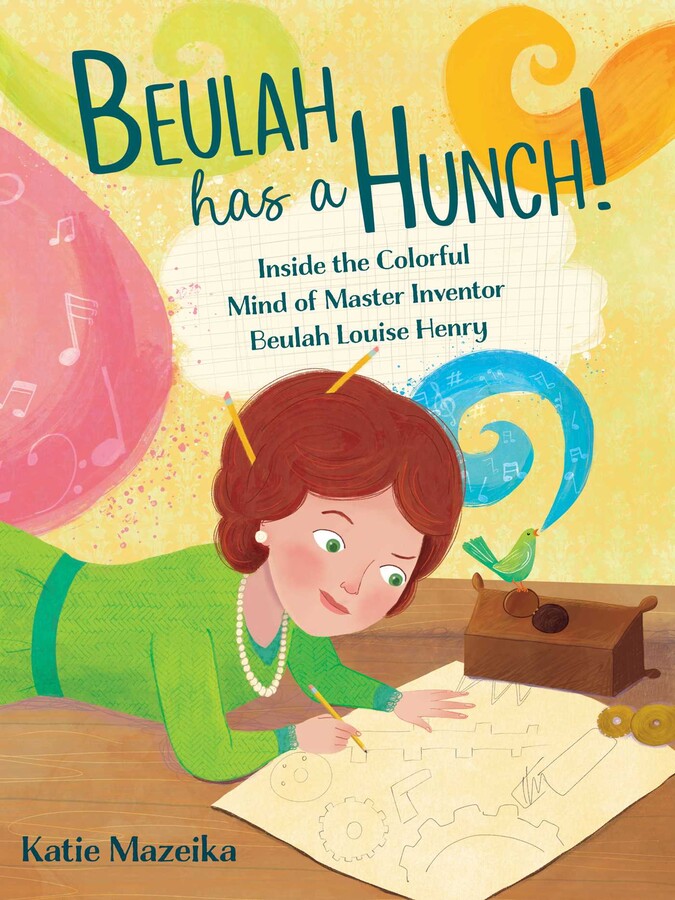
Beulah Louise Henry loved to think about why things work when she was a child. She’d doodle out the images in her mind and then get frustrated at the fact that they weren’t exactly what she was imagining. Beulah wanted to explore, was curious about the unknown, and enjoyed the ladylike things that women in the early 1900s desired, but saw a bigger picture. Even from a young age, Henry had the ideas, but being that it was a time when women couldn’t even vote, she also faced a lot of uphill battles.
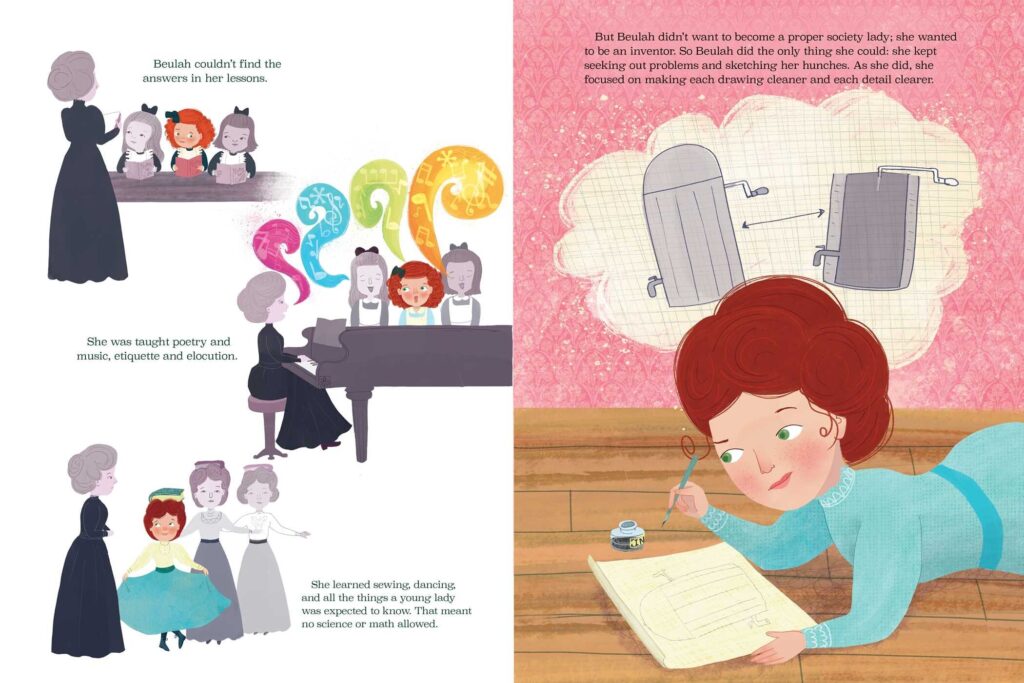
As Beulah has a Hunch! continues, readers will learn that she had synesthesia, a neurological condition where people associate one sense with another. For example, she would automatically pair a certain color with a name or code words with specific other sensory attributes. In the book the author, Katie Mazeika uses the term that Henry herself used for the condition, “color-hearing”, which will certainly encourage older readers to research this condition that’s neither a disorder nor a disease. It’s just something that some folks have; however, my inner doctor gives me the Spidey sense that this condition heightens the creativity and intellect of folks who have it.
When she becomes a young adult it’s all the rage to carry an umbrella to shield ladies from the sun. The issue, with fashion-forward women is that the umbrellas were the same color and unable to change with the owner’s moods or the weather. She came up with an idea that allowed for a detachable cover but still had to fight the production process.
She had produced multiple drawings of her idea and couldn’t find a company to make her prototype. Beulah was very confident that women would purchase, and could genuinely use her invention. The effort to design the blueprints for the patent process was draining and took two years, but it got done. She traveled from Charlotte to New York City just to find a production facility but was then told that her design wasn’t feasible. When she heard this she found a hammer, some nails, a bar of soap and approached one final facility, who agreed with her. Why would she use a bar of soap in an attempt to retrofit an umbrella with a removable cover? That’s one mystery that we’ll save for the book.
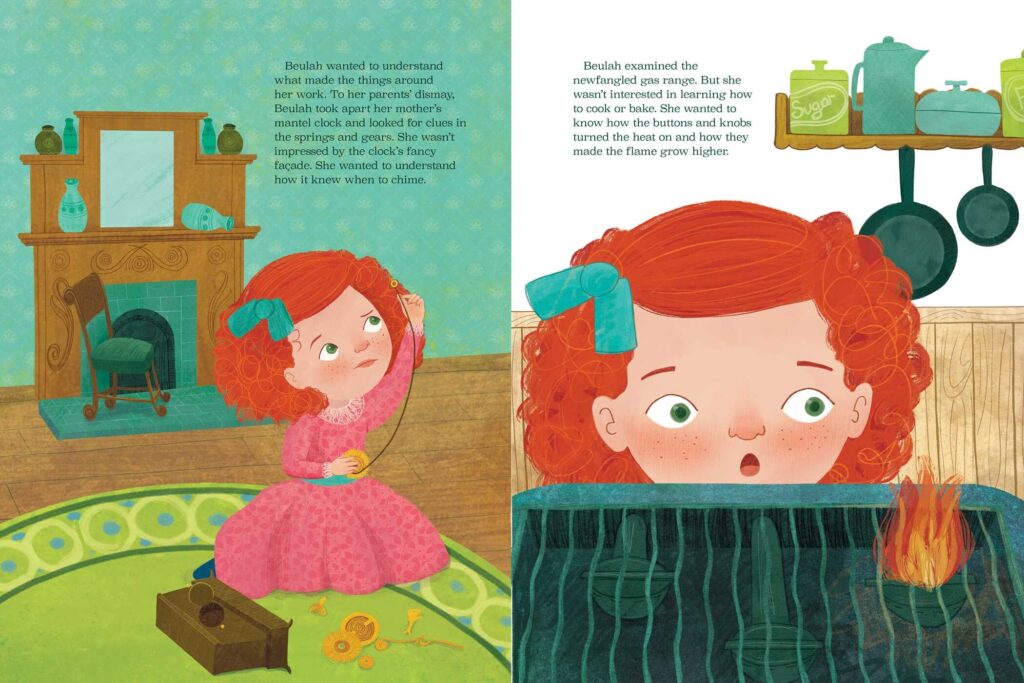
Henry went on to patent and invent many things that certain ages will take for granted like the spring-limbed stuffed animal, a doll that can open and close its eyes, a basting oven, and more. It’s no surprise that she was colloquially called “Lady Edison” in the late 1930s.
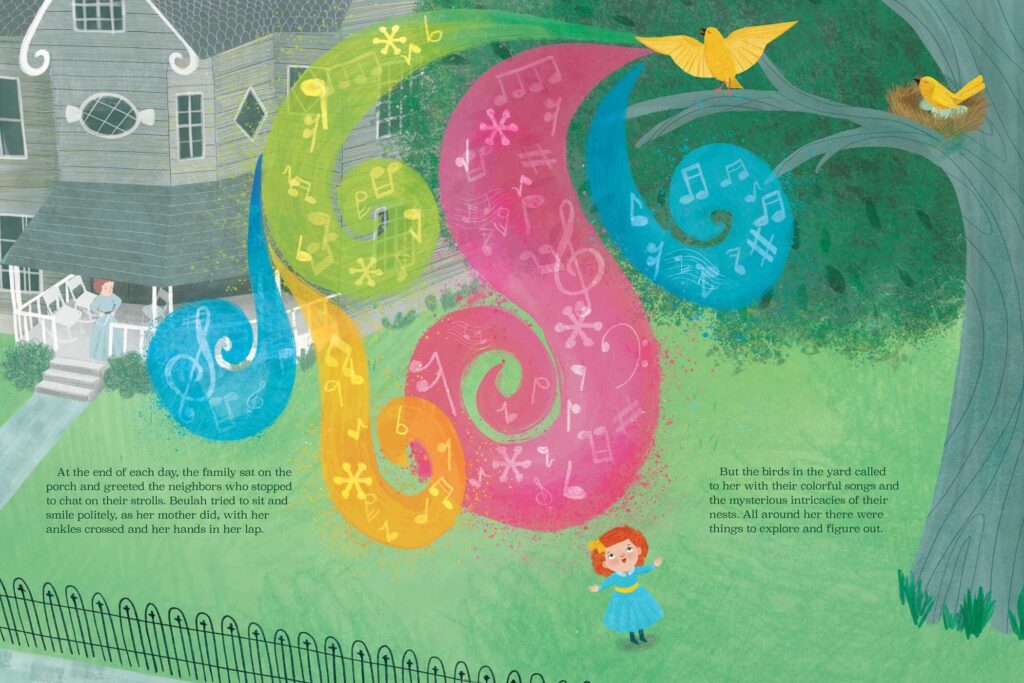
A couple of things will hit young audiences or those who are reading Beulah has a Hunch!. This is a very large, slightly oversized illustrated book. The illustrations in the book are playful and brim with the happy vibe that those young elementary school ages seek out. After you read the book you’ll see things that were shown inside that are also shown on the book’s cover, like the colors that she’d associate with shapes and the bird beside the box that she’s taken apart. The text will serve as a way to motivate and make young audiences curious about the things that don’t exist yet, but will seem commonplace in a couple of decades.
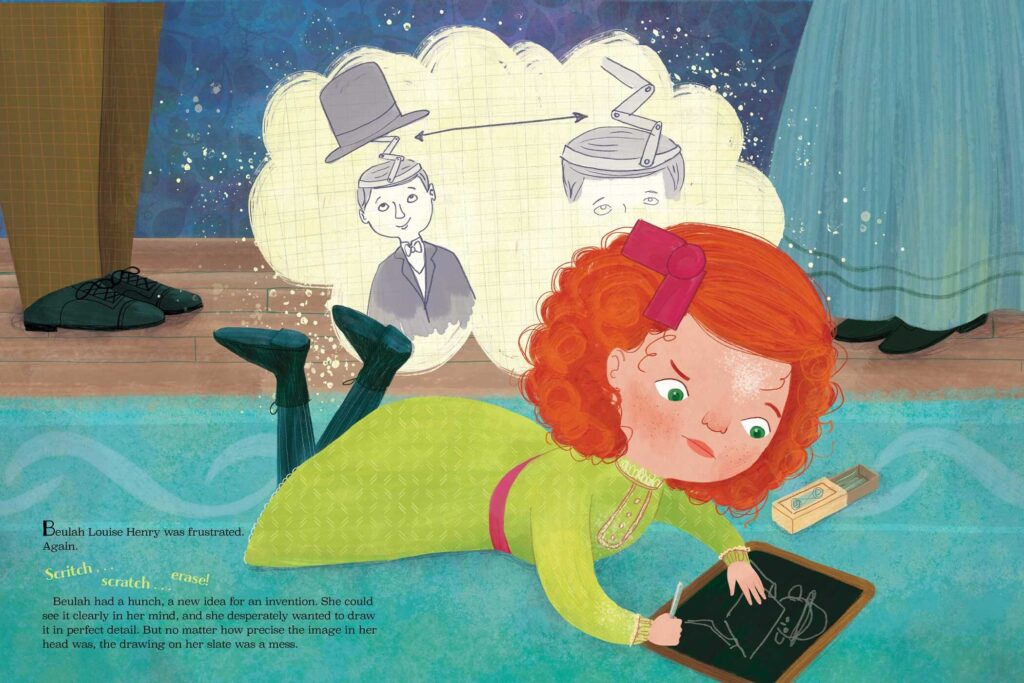
Those audiences will need to be introduced to the fact that women having umbrellas as a means to shade them from the sun was a status symbol in the 1920s. They’ll need to be told that dolls didn’t always have moving eyes or weren’t created to be able to talk. These are inventions or improvements to existing things that needed to be modified in order to meet the expectations of their audiences. Improving things, making things easier to where they’re more of a creature comfort or can reach a wider audience is what fuels innovation. Beulah has a Hunch! Inside the Colorful Mind of Master Inventor Beulah Louise Henry is an illustrated book that young audiences will enjoy. It’ll make their minds widen as the concept of certain things never existing and will show them someone who didn’t have success handed to them on a plate make things happen on their own.
Beulah has a Hunch! Inside the Colorful Mind of Master Inventor Beulah Louise Henry is by Katie Mazeika and is available on Beach Lane Books, an imprint of Simon & Schuster.
There are affiliate links in this post.

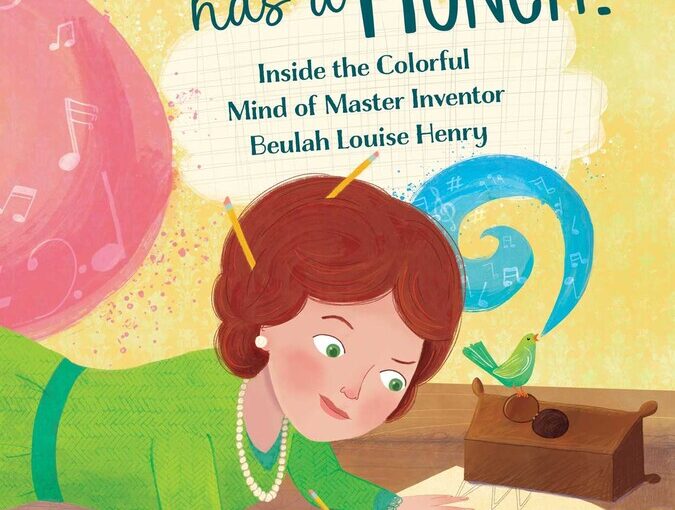



 Facebook
Facebook Twitter
Twitter Flickr
Flickr GooglePlus
GooglePlus Youtube
Youtube